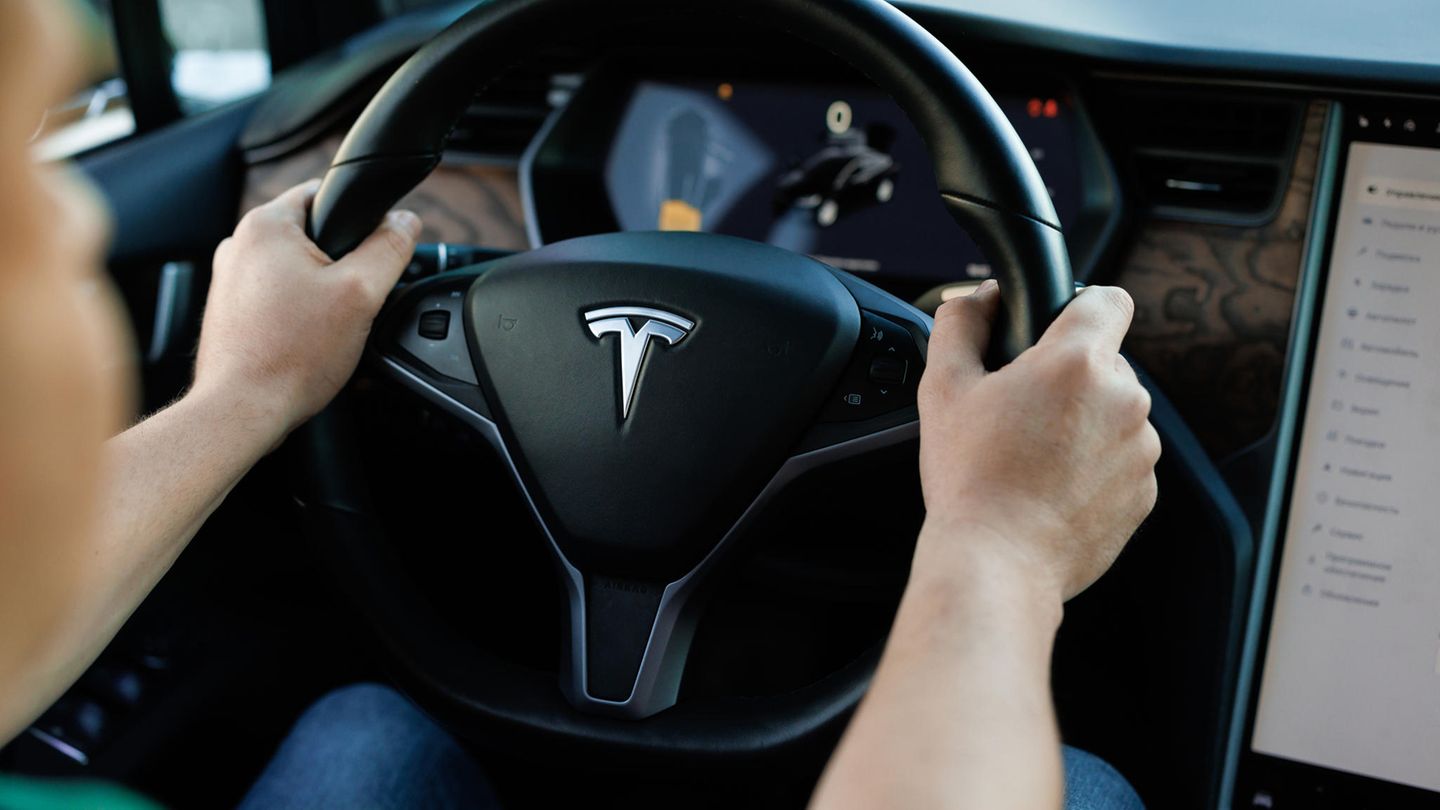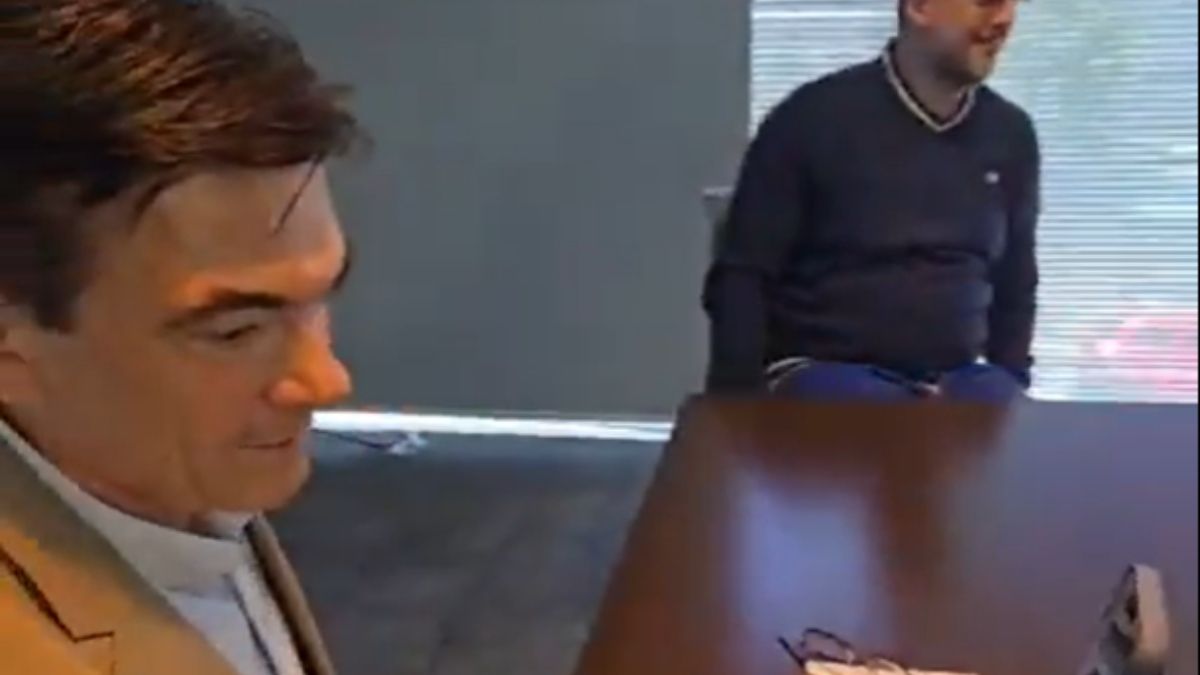Tesla boss Elon Musk wants to announce his plans for an autonomous car on Thursday – but it is doubtful whether that can end the strategy crisis.
Elon Musk is calling to the dream factory: The Tesla boss wants to present his plans for robotaxis on Thursday in the famous Warner Bros. film studios. The date is of great importance for Tesla and Musk. Because the so-called cyber taxi can and must pave the way out of the crisis for the electric car manufacturer that has found itself in unsafe territory – if it gets going soon.
This is original Capital branded content. This article is available for ten days on stern.de. You will then find it again exclusively on capital.de. Capital belongs like that star to RTL Germany.
Musk couldn’t have chosen a more appropriate location for a presentation than the halls of Hollywood. Not stands for imagination, gigantic backdrops, victory and defeat – and that’s exactly what Musk wants to be measured by. It’s not the first time that the 53-year-old announced a robotaxi offensive: it was in 2016 when he described autonomous driving as a “solved problem.” According to the announcement, he wanted to bring fully autonomous vehicles onto the market the following year – and already have a fleet of 1 million robotaxis by 2024. The fact that nothing happened doesn’t necessarily mean that this time too they are just announcements without substance – because as rarely as the Tesla boss has kept promises in the past – sometimes something came of it after some delay.
Pressure from the stock market
What is certain is that the date on October 10th was set under great pressure – and with a view to Tesla’s performance on the stock market. The share, which has been sent to fantastic heights over the years thanks to enormous advances in trust, has come under severe pressure this year. This was preceded by massive disillusionment with Tesla’s potential. Musk is now trying to counteract this disillusionment – even if it is a new illusion. The disillusionment follows simultaneously from the severe operational problems that plague Tesla and the strategic ambiguities that the company has accumulated.
Operationally, Tesla is suffering from weak demand for electric cars, from competition that can now keep up with quality, from poor economic development in China and from cost problems. In addition, Tesla did not take care to renew and expand its model range in a timely manner. Instead, a lot of money and brainpower went into the prestige Cybertruck project, which has no significant economic significance and also falls far short of what Musk had originally promised for the car.
This situation can be seen in the declining profit margin. There are no longer double-digit percentage values that depend on operational sales. But a company with the stock market valuation of Tesla would have to offer such values - and even more so a car manufacturer that sees itself as premium. In the first quarter, Tesla ended up with 5.5 percent, far behind Toyota, Hyundai, Mercedes, BMW and even behind the stumbling Volkswagen Group. Things didn’t look much better in the second quarter at 6.2 percent. Tesla has reached the level of the normal, ailing auto industry. But even after the correction at Tesla, it is valued much worse on the stock market. But Tesla’s promise was always to escape the logic of the traditional industry. The aim was to be viewed like a tech company, like Google, Apple and Microsoft.
Mass or premium?
The strategic uncertainty makes matters worse: In which direction does Tesla want to develop? A mass car manufacturer that quickly sells 20 million cars a year, as promised by Tesla, i.e. as many as the two global industry leaders Toyota and Volkswagen combined? At the beginning of the year, Musk promised to bring the Model 2 onto the market in 2025, an affordable, compact car that would have significantly increased emissions. This plan has long since been quietly scrapped, perhaps because a compact or small car would hardly be able to bring about the necessary improvement in margins. Another strategic option could have been to once again emerge as the industry’s cost champion. Musk has made big announcements here too: a completely new production system that is faster, more productive and more efficient. There, too, the announcement was followed by silence.
Instead, Musk decided to push ahead with robotaxis. Even though he later postponed the event, which was originally planned for August, to October without giving any reasons. The plans for autonomous driving service cars should now bring fantasy back into Tesla shares. Whether it is possible to develop a fully autonomous car will determine “whether Tesla is worth a lot of money or practically nothing,” said Musk himself.
The fantasy thing worked, at least for now. Since the announcement of the cybertaxi event, the stock has at least bounced back from the lows it plunged to after the disillusioning quarterly results.
Doubts about Tesla’s technology
But will autonomous driving services be able to control Tesla from the low point in the long term? The question is whether Tesla has the technology and skills to succeed with such a taxi service. The expectations for the market for self-driving taxi services are already huge. The major bank UBS, for example, is forecasting a volume of 238 billion dollars as early as 2030. However, powerful companies have already made great progress in this regard. The Alphabet/Google subsidiary Waymo has been offering self-driving car rides in the San Francisco area for some time. Likewise Toyota and its partner company May.
However, there are doubts about Tesla’s capabilities. This is due to the past and technology. If you believe Musk, the previous Tesla vehicles should also have the technology on board to drive fully autonomously. He said again and again that this would only have to be activated later when the relevant regulatory hurdles had been cleared. The fact that he is now planning a new vehicle for autonomous driving is an indirect admission that the claims of the past were false. Tesla does sell a feature called “Full Self Driving,” but that’s a misnomer – it requires constant attention from the driver. There were also many breakdowns and accidents with Tesla’s autopilot system.
In addition, Tesla insists that the company’s self-driving cars only need cameras – and no other sensors such as lidar or radar. There are widespread doubts in the industry that this will work. It also seems to be primarily a cost issue for Tesla. For example, lidar technology, an optical distance and speed measurement, is expensive.
Tesla part time
After all, if Musk is serious about the cybertaxi, his entire company would have to reinvent itself. He would have to become a service provider. If Musk is taken seriously, selling cars to end customers would only be a marginal business in the future. Instead, Tesla would have to become something like Uber. It is doubtful whether the company, which is already under great stress with its core business, is able to do this.
Especially since the boss can only take care of Tesla part-time. He is currently campaigning across the country for Donald Trump in the US presidential election campaign. If Trump wins, Musk could hope for help with his cybercab plans. How quickly driverless driving services spread will also depend on regulatory decisions. Trump, it is hoped, could ensure lax security rules so that his new friend’s cyber companions can get off quicker.
Source: Stern




